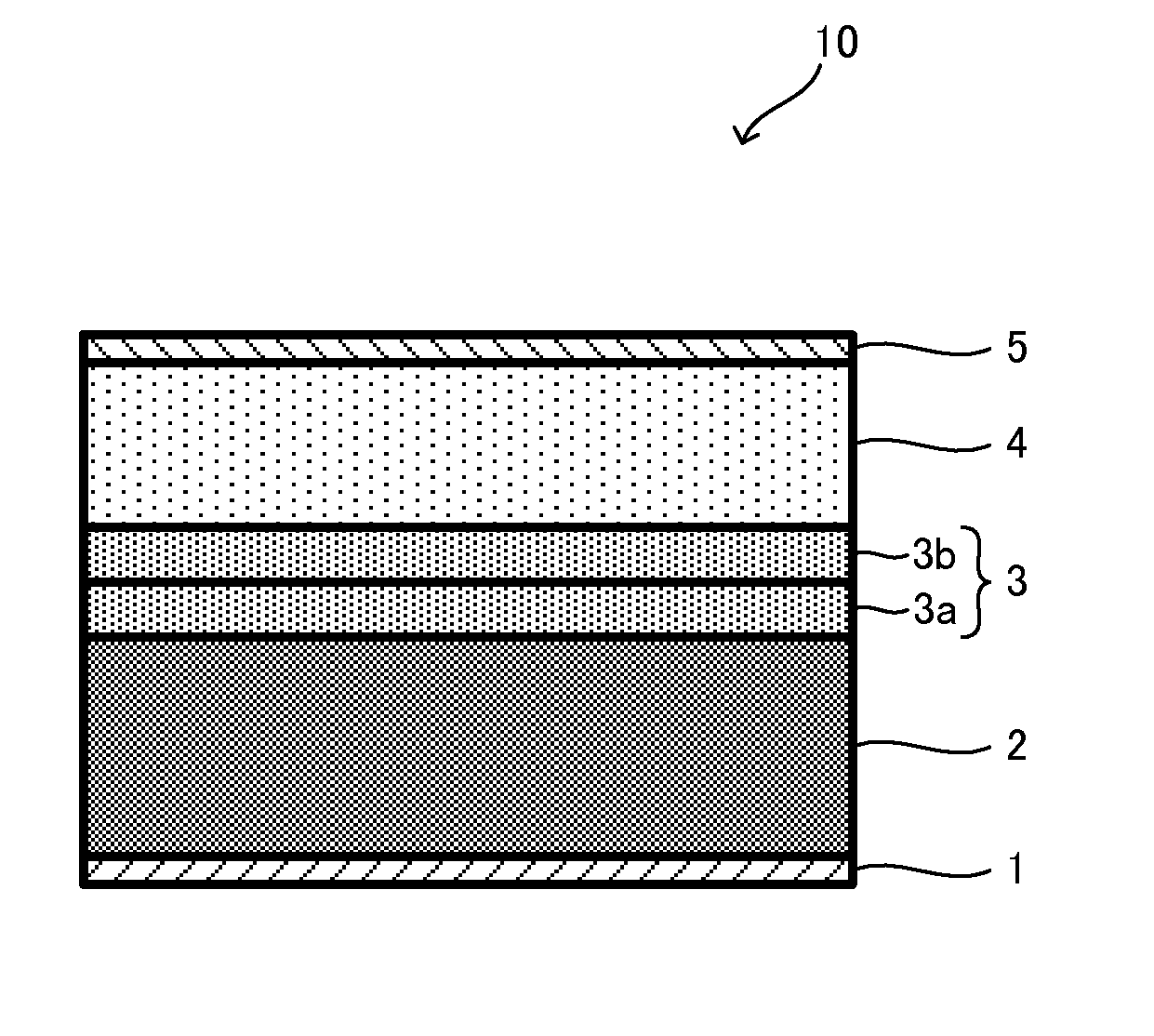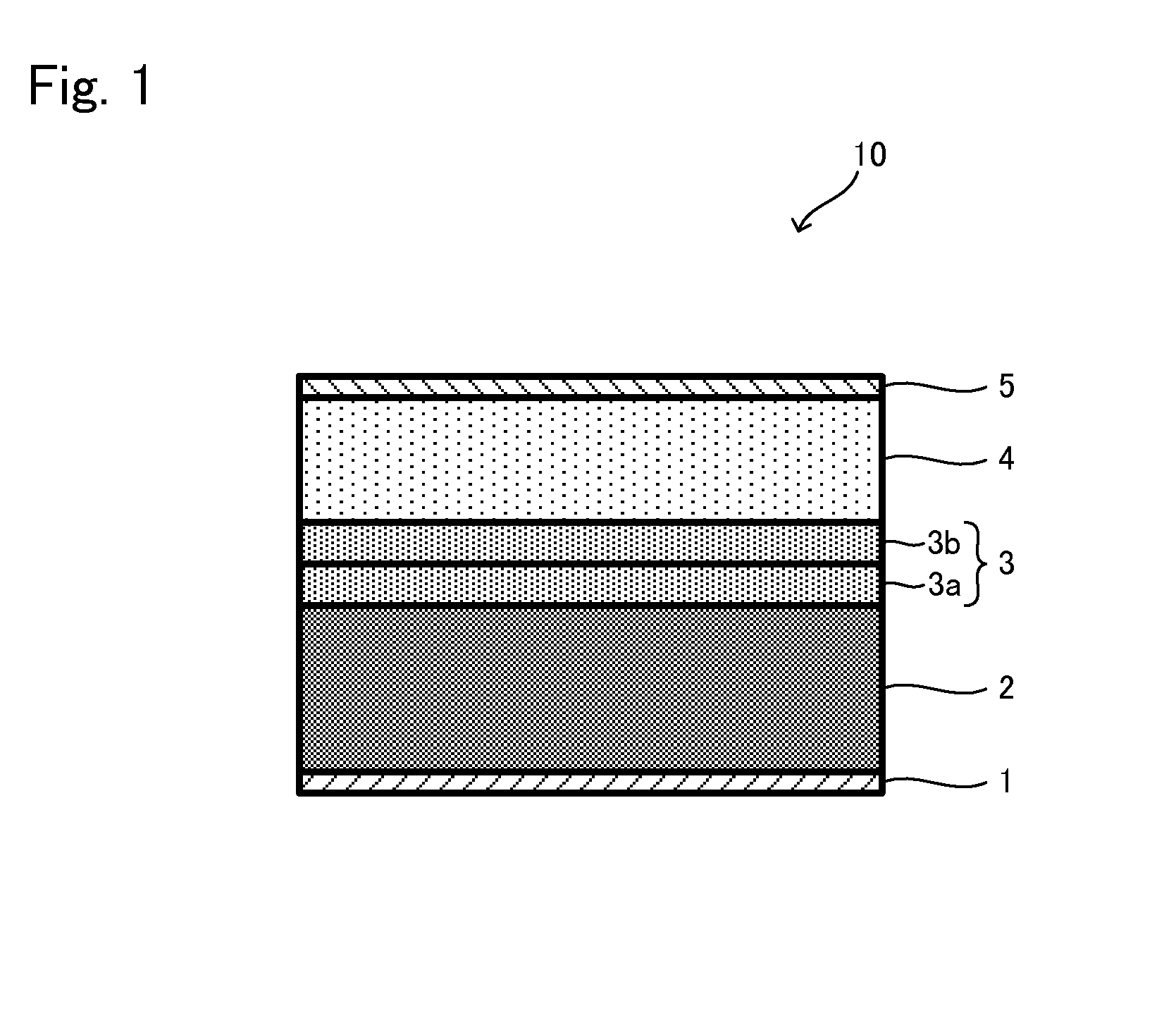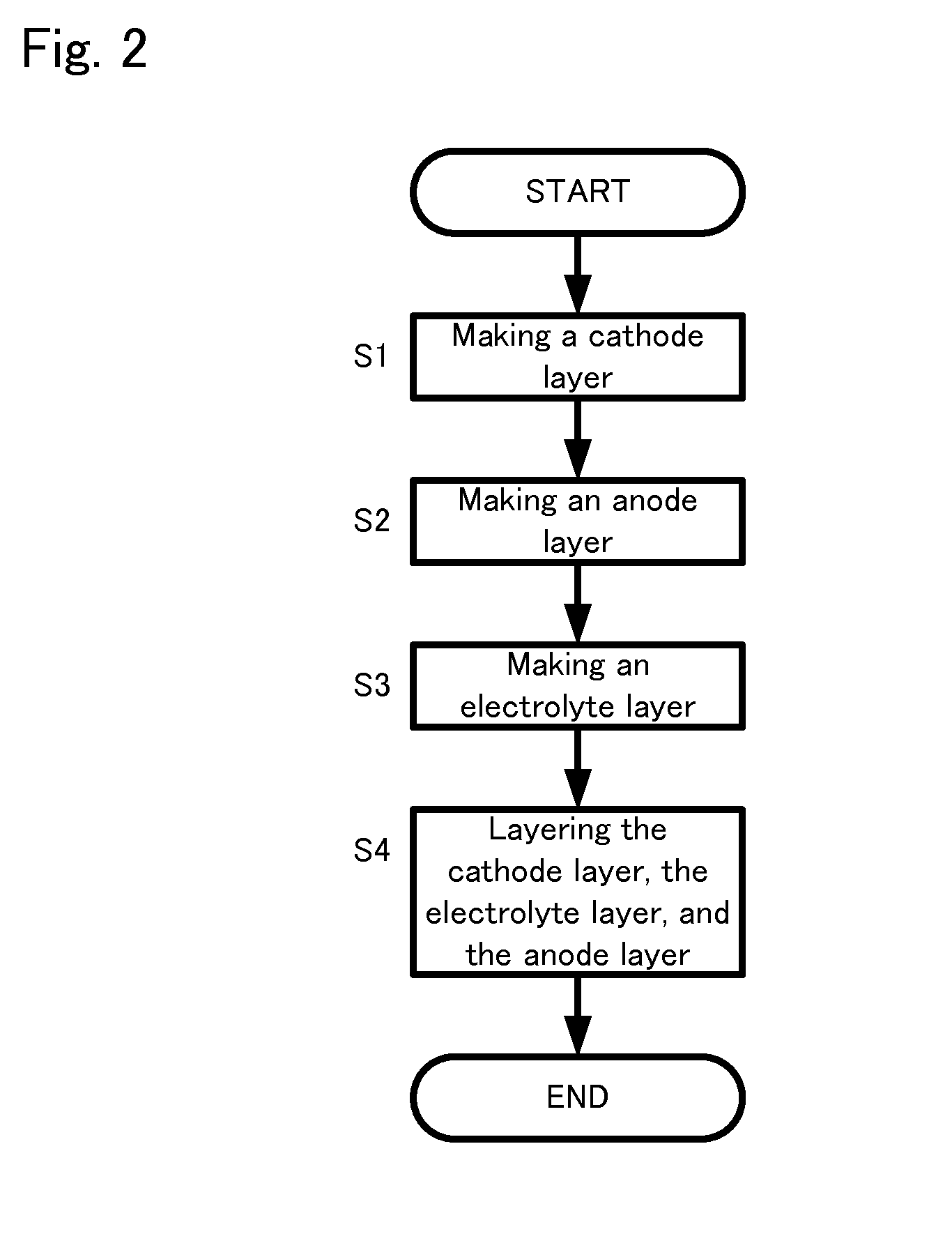All-solid-state battery and method for manufacturing the same
a technology of all-solid-state batteries and manufacturing methods, which is applied in the direction of sustainable manufacturing/processing, non-aqueous electrolyte cells, cell components, etc., can solve the problem of short circuit between the electrodes, and achieve the effect of inhibiting a short circui
- Summary
- Abstract
- Description
- Claims
- Application Information
AI Technical Summary
Benefits of technology
Problems solved by technology
Method used
Image
Examples
example 1
[0070]1) Cathode Layer
[0071]A cathode active material (LiNi1 / 3CO1 / 3Mn1 / 3O2), a sulfide solid electrolyte (75Li2S-25P2S5. The same is applied hereinafter), conductive material (vapor growth carbon fiber, manufactured by SHOWA DENKO K.K.), and a binder (butylenes rubber, manufactured by JSR Corporation. The same is applied hereinafter) were weighed such that their weight ratio was: cathode active material:sulfide solid electrolyte:conductive material:binder=100:33.5:3:1.5, and mixed, whereby a cathode mixture was made.
[0072]In inert gas (argon gas. The same is applied hereinafter), a cathode composition in a slurry form was made by mixing the cathode mixture and a solvent (heptane, manufactured by KANTO CHEMICAL CO., INC. The same is applied hereinafter). The obtained cathode composition was applied to a cathode current collector (aluminum foil) by means of a doctor blade method, then dried, whereby a cathode layer was made on the cathode current collector.
[0073]2) Anode Layer
[0074]An...
example 2
[0080]With the same material and the same method as in Example 1, the cathode layer, the anode layer, the first solid electrolyte layer, and the second solid electrolyte layer were made. Thereafter, in inert gas, the cathode layer and the first solid electrolyte layer were punched out in a size of 1 cm2, and pressed at a pressure of 98 MPa in a state of being overlapped with each other in a manner to have contact with each other. Thereafter the base material in contact with the first solid electrolyte layer was peeled, whereby the first solid electrolyte layer was arranged on the surface of the cathode layer. Next, the second solid electrolyte layer was punched out in a size of 1 cm2, and pressed at a pressure of 98 MPa in a state of being overlapped with each other in a manner to have contact with each other. Thereafter the base material in contact with the second solid electrolyte layer was peeled, whereby the second solid electrolyte layer was arranged on a surface of the first s...
example 3
[0081]An all-solid-state battery of Example 3 was made in the same conditions as in making the all-solid-state battery of Example 1, except that a sulfide solid electrolyte powder having an average particle diameter D50 of 2.5 μm was used and the thickness of the electrolyte after the second solid electrolyte layer and the cathode layer were layered so as to have contact with each other and pressed was 5 μm.
PUM
| Property | Measurement | Unit |
|---|---|---|
| thickness | aaaaa | aaaaa |
| particle diameter | aaaaa | aaaaa |
| particle diameter | aaaaa | aaaaa |
Abstract
Description
Claims
Application Information
 Login to View More
Login to View More - R&D
- Intellectual Property
- Life Sciences
- Materials
- Tech Scout
- Unparalleled Data Quality
- Higher Quality Content
- 60% Fewer Hallucinations
Browse by: Latest US Patents, China's latest patents, Technical Efficacy Thesaurus, Application Domain, Technology Topic, Popular Technical Reports.
© 2025 PatSnap. All rights reserved.Legal|Privacy policy|Modern Slavery Act Transparency Statement|Sitemap|About US| Contact US: help@patsnap.com



